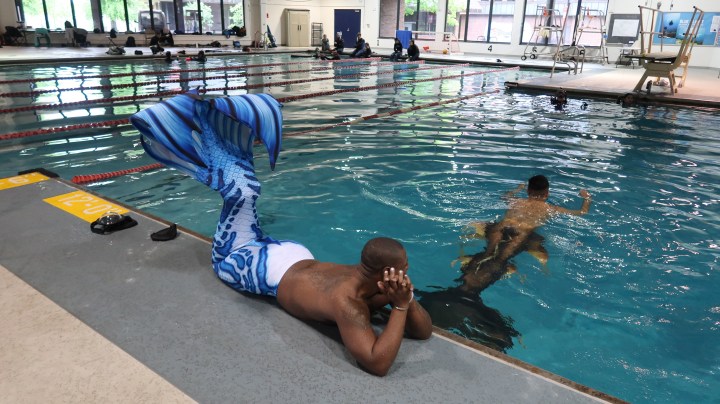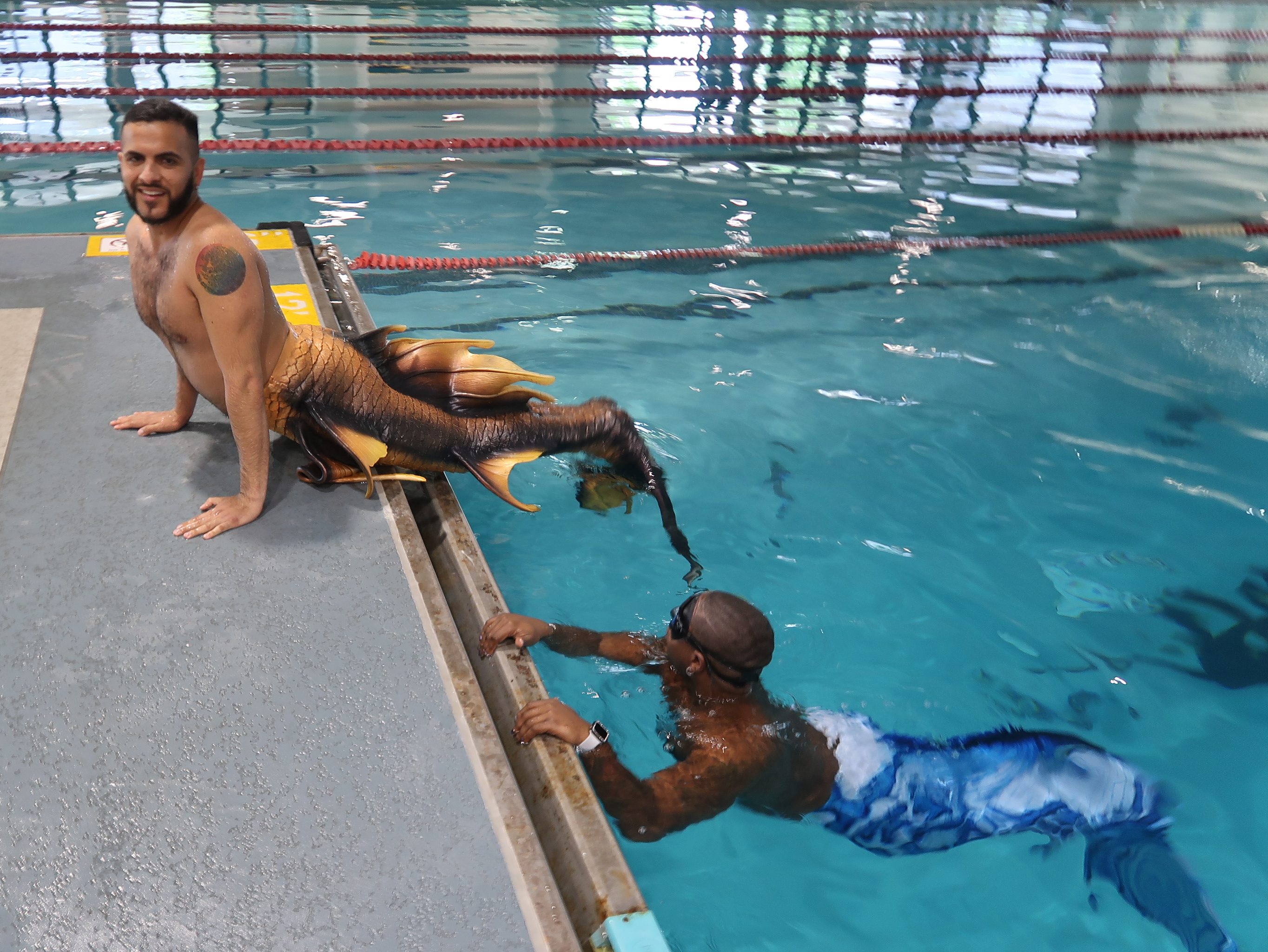
Disney’s new “Little Mermaid” drives a wave of business for the mermaid industry
Disney’s new “Little Mermaid” drives a wave of business for the mermaid industry

The live-action version of Disney’s “The Little Mermaid” opened in theaters on Friday and is expected to pull in more than $100 million at the box office over the holiday weekend. But Disney isn’t the only company that stands to benefit from a fresh round of interest in all things mermaid. A rapidly growing “mermaiding” industry is preparing for more attention and more revenue.
To enable children and adults to live out their mermaid dreams, dozens of companies offer themed swimming suits, crowns, hair accessories and swimmable tails. For those who really want to get into it, several groups offer formal mermaid training, teaching people how to swim underwater with their feet bound up in a monofin and their legs in a mermaid tail — something that can be a challenge, even for experienced divers.
“People look at mermaids and think, ‘Oh, they’re just holding their breath underwater and smiling at you,'” said Jonas Furberg, co-owner of Blue Planet Scuba in Washington, D.C. But, as he learned after completing the training himself, “it is exceedingly hard when you see these photos of people with their eyes open and smiling. That is really hard. You essentially have to just allow the water into your nose and your sinuses and be totally OK with it.”
Blue Planet has two mermaid instructors on staff, and Furberg said they’re training more ahead of an anticipated surge in interest because of “The Little Mermaid” — especially among kids.
“And so we’re already looking into figuring out how we can stock up on smaller monofins and smaller tails to rent to any kids who want to go ahead and do the certification,” he said.
That mermaid certification comes from the Professional Association of Diving Instructors, commonly known as PADI. It’s one of several groups that offer formal mermaid training, although such training isn’t required to engage in the activity. While mermaiding as a sport has been popular in China since about 2019, PADI starting offering the certification here in the U.S. in 2021.
Julie Andersen, the global director of brand for PADI and a certified mermaid herself, said the courses have been even more popular than anticipated.
“We can’t keep up with demand, we are making instructors as fast as possible. We’re making instructor trainers, so they can train instructors as fast as possible,” Andersen said. “We’ve seen over a 400% increase in the last year alone from mermaiding.”
Andersen said many people in the diving community started out skeptical of what’s effectively underwater cosplay, but they quickly realized that people will spend tons of money to become their own version of Ariel, with estimates that the mermaid tail industry alone is currently worth almost $150 million a year.
In addition to the tails, there is the cost of classes, travel for “mermaid experiences” and underwater cameras that help professional mermaids catch the perfect photos of their dives.

Andy Vargas, 24, aka Merman Andy, is a professional merman and social media influencer. He won the 2022 King of the Seas competition and is featured in a new Netflix docuseries about mermaiding. Vargas has a day job as a professor of vocal music but also performs as a merman —often highlighting tails from his partnership with Mertailor, a mermaid tail company.
But Vargas said it can be challenging to turn the hobby into a business.
“I think I’ve accumulated just in total about $18,000 between all the gigs, all of the commissions that I’ve gotten from selling these tails,” he said, adding that he’s probably spent that much on gear and trips to get where he is today. “So I’ve probably just about broken even where I’m at right now.”
While Vargas has only been active in the space for a few years, professional mermaid Brandee Anthony started her mermaid business back in 2013.
“Definitely, the mermaid world hasn’t been taken as serious[ly] as a lot of the other industries,” said Anthony, also known as the Vero Beach Mermaid. She said that is starting to change as more people and businesses make money in the industry. She’s been so successful that she split off her training business from her performance and social media operations.
“And I’ve doubled my revenue every single year since 2013,” Anthony said. “And I’m a six-figure company now, just the one mermaid company by itself. Just training people is a six-figure company.”
The vast majority of merpeople, though, are hobbyists who don’t make money off the sport. They meet up in local groups they call pods to take pictures and just have fun.

Erika Ruble, 26, who achieved her mermaid certification in February, drove two hours from West Virginia to attend a mermaid meetup in Washington. Ruble, who uses the mermaid name Eureka, said she’s spent about $1,000 so far on her mermaiding classes and gear, including two secondhand tails.
“So both of these I got, I think, for like $600,” Ruble said, adding that that is a lot cheaper than buying new. “And they are nice because it has a little dorsal fin, hip fins, all that cool stuff. And then since I have a monofin, I can change out the skin so I can have different looks.”
But even casual mermaids can often spend thousands of dollars on classes, accessories like crowns and faux seashell tops — and, of course, those tails, which can easily cost $5,000 to $10,000 or more.
Trina Mannino contributed to the slideshow of photos.
There’s a lot happening in the world. Through it all, Marketplace is here for you.
You rely on Marketplace to break down the world’s events and tell you how it affects you in a fact-based, approachable way. We rely on your financial support to keep making that possible.
Your donation today powers the independent journalism that you rely on. For just $5/month, you can help sustain Marketplace so we can keep reporting on the things that matter to you.





















